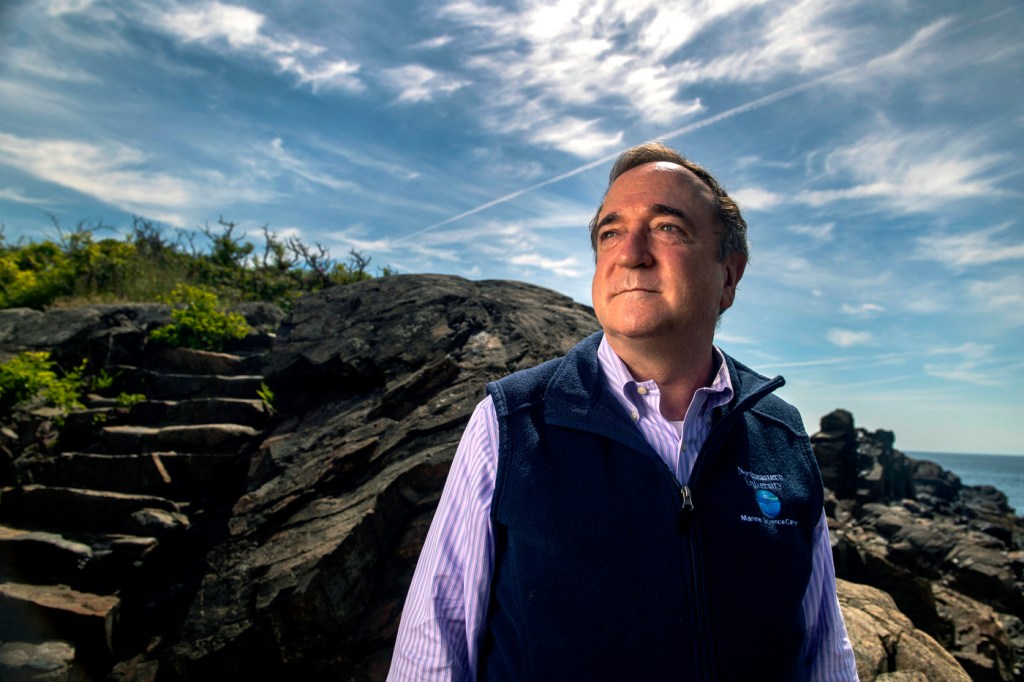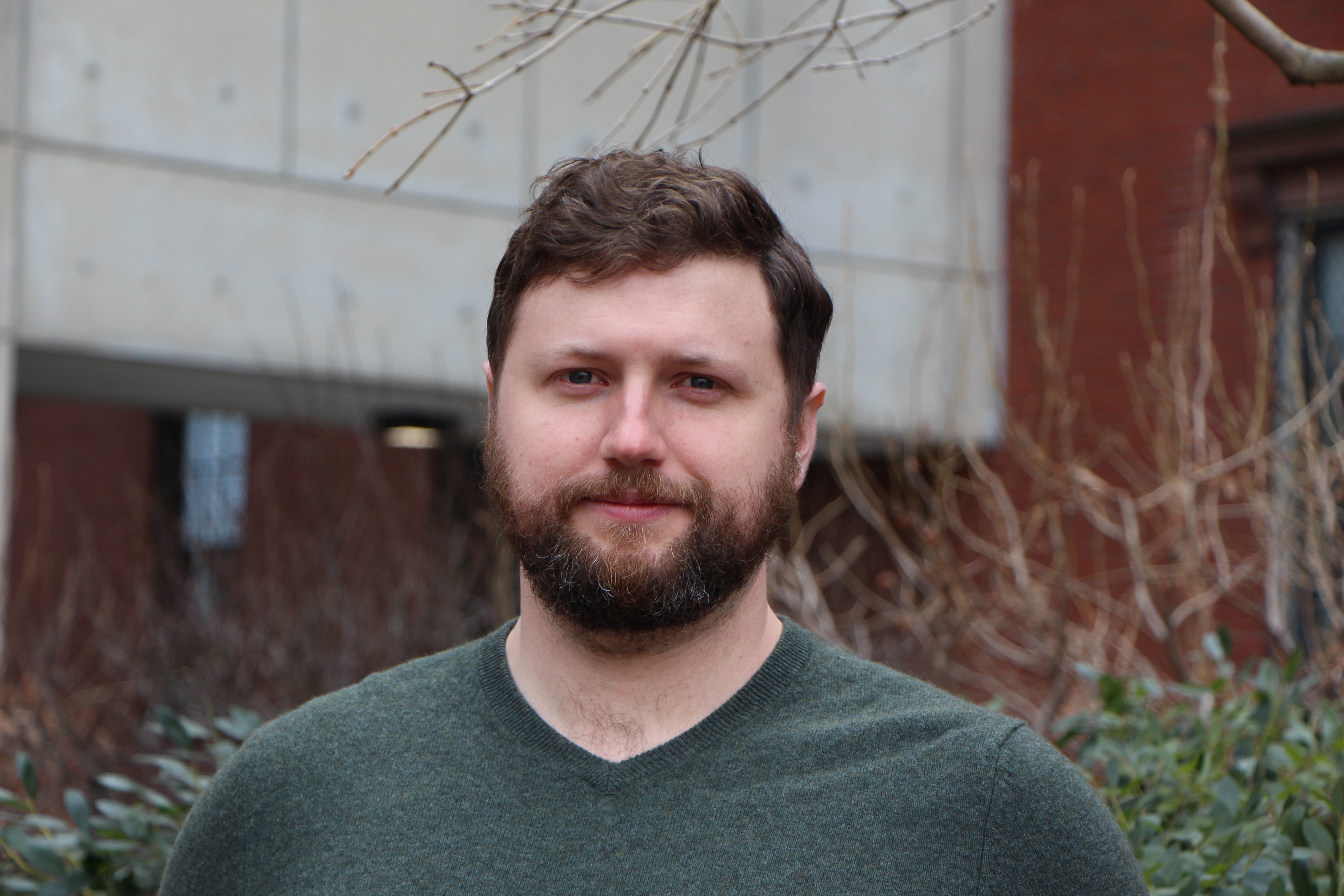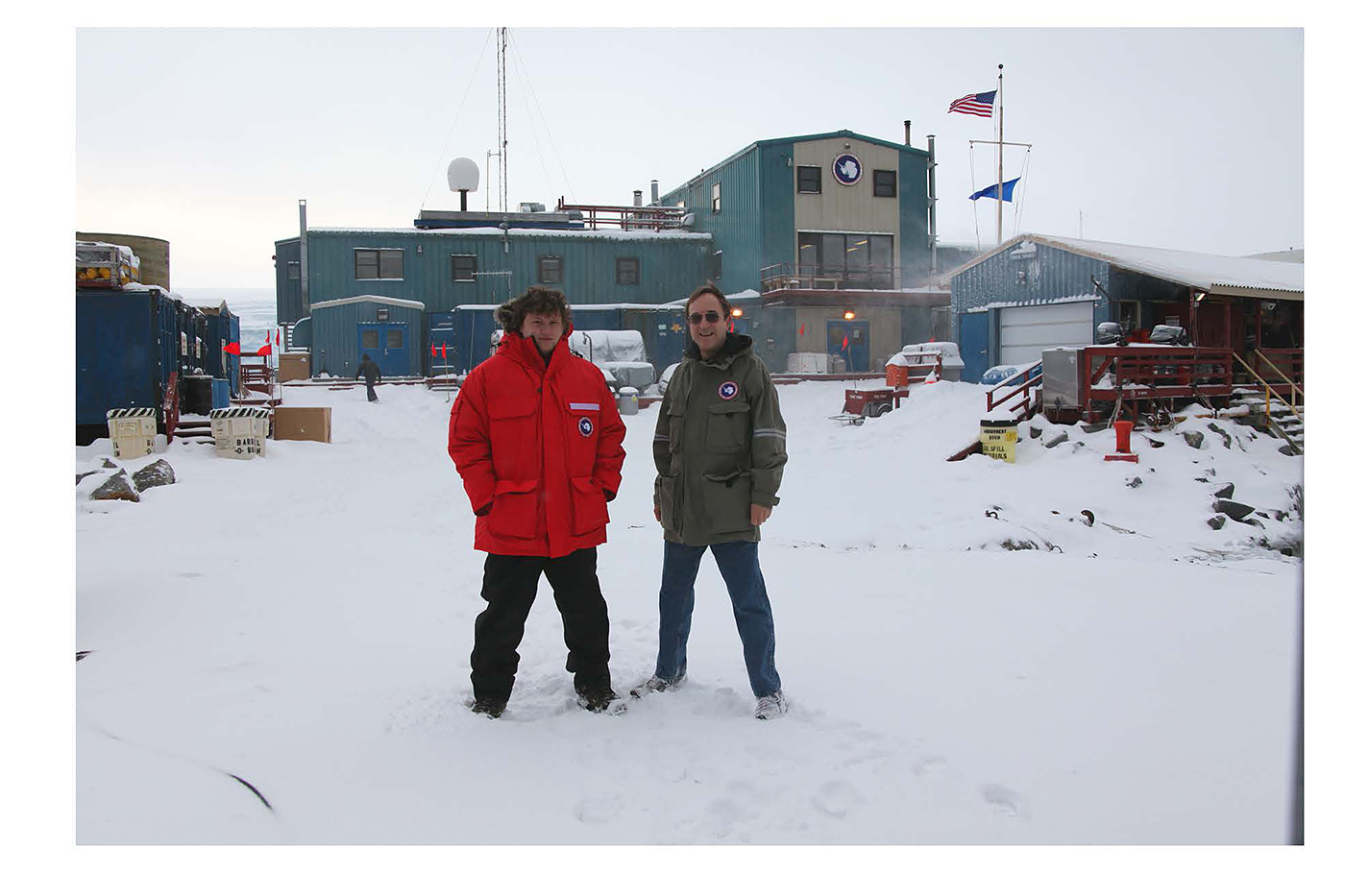The legacy of H. William Detrich is rising with the Antarctic tide

Apart from the objectionable odor of the penguin rookeries and elephant seal haul outs, there is little to be smelled in the outdoors of Antarctica. “And the only colors you see are black, white, and blue,” says H. William Detrich, world-renowned professor of marine and environmental sciences, who retired from Northeastern in December. “There is no green. Unless it’s a building that’s painted green.”
For the past four decades, Detrich traveled to the far end of the Earth—depriving himself of the normal array of senses—on an every-other-year rhythm. It has been a life of adventure and achievement.
In 2016, a spot of land was named Detrich Island in honor of his discoveries. (It stands within a mile of Palmer Station, the U.S. research base in Antarctica that has been Detrich’s preferred home away from home.) Many of his findings have centered on the evolution of the ice-loving notothenioid fishes that have survived the Southern Ocean’s frigid temperatures by producing an antifreeze protein. One subgroup, the icefishes, even discarded red blood cells and hemoglobin altogether, which are essential to all other known vertebrates.
An irony of Detrich’s obsession with icefishes is that he too is exceptional. He has made his own way, transcending the narrowly focused perspective that can be typical in science. When asked what makes him most proud as he looks back on his career, his answer is surprising to anyone who doesn’t know him well. Detrich dwells most of all on his creation of a co-op program that has sent eight Northeastern students to Antarctica for six months at a time.

Detrich’s innovation has enabled Northeastern to offer co-op job opportunities on every continent. Many students have approached the professor—in some cases before they’ve been accepted by the university—to inquire about the co-op.
The formation of the co-op program and his relationships with fellow researchers provide a new vein of insight into Detrich’s career.
“He was on work-study when he came into the lab,” Detrich says of the unlikely path taken by his first Antarctic co-op student. “He started out washing dishes. But he asked a lot of questions. Being in the lab with students was such a great opportunity for him. He was really soaking it all up.”
The year was 2009. The student was Corey Allard.
Corey Allard: I started in the lab as a work-study, cleaning the zebrafish tanks and washing dishes, that sort of thing. What the lab studied was really fascinating. Bill had these replicas of Antarctic fish that were really crazy looking. I asked to get more involved in doing research. And Bill let me.
I started working in the lab, helping a graduate student with her research. Eventually, when Bill needed someone to stay for the entire winter in Antarctica to watch over the developing fish and take samples, he asked if I would consider a co-op to do that job.
I was really excited. I didn’t ever think that I could go to Antarctica as an undergraduate. He was really putting a lot of trust in me, and it just shows Bill’s level of dedication to teaching and training students that he was willing to make that investment. The further I get in science, I appreciate more and more how big it was to give me that opportunity.
Detrich knew from his own experiences that life-changing inspiration can come from anywhere at any time. He grew up on the outskirts of Washington, D.C., where his father made films of the Apollo space missions for NASA.
“I didn’t know how lucky I was,” he says. “As a teenager, you’re saying, ‘Oh, Dad, is it another Gemini movie?’”
Detrich knew from a young age that he wanted to work in science. His curiosity took him far and wide. He began by studying engineering, abruptly switched to undergraduate psychology at Case Western Reserve University, and then, during his senior year, decided to take a freshman class in biology.

“One of the faculty members teaching the course was working in what would become molecular biology—the ability to clone and manipulate genes,” Detrich says. “Her presentation about the cellular machine that separates chromosomes during cell division was so fascinating. The proteins were just being discovered at the time. I said, ‘I’ve got to get into that.’”
It was during his postdoctoral work in 1980 at the University of California, Santa Barbara, that Detrich received his first invitation to participate in a research program in Antarctica.
“I just fell in love with it,” Detrich says. “There was so much biology around that was not being explored. It was like being a kid in the candy store because there’s so much opportunity, so many interesting things to do. That was an experience that really changed my life and changed my perspective on the research that I wanted to do.”
Detrich did not wish to keep those feelings of joy to himself. He wanted others to experience the senses of creativity, discovery, and adventure that he was encountering.
Thus did Corey Allard follow him to Antarctica.
Corey Allard: Once you’re there, resources are very limited. There’s a doctor at Palmer Station, but they can’t do surgeries. If you get sick or get hurt, it’s very hard to get you out. So they want to make sure that you don’t have any health risks or problems, and that you take care of cavities, and things like that.
You fly to the very southern tip of South America, and then get on this giant, orange icebreaker called the RV Laurence M. Gould. It’s run by the National Science Foundation. And from there, depending on the weather, it’s anywhere from a week to two weeks across some of the roughest water on Earth. It’s a pretty bumpy ride. Then you get to Palmer Station, which is where I worked, off the tip of the Antarctic Peninsula.
Bill was incredibly generous and he was also very patient. As an undergraduate, you make a lot of mistakes. He was very understanding of that as part of the learning process. More than anything, you could tell he was really invested in his students. I think he saw opportunities in me and the others to improve and grow.
Detrich joined the faculty of Northeastern’s biology department in 1987. By then his relationship with the icefishes was developing quickly. There was nothing else on Earth quite like them.
Forty million years ago, when the relatively warm Southern Ocean surrounding the Antarctic began to cool, most fish species moved naturally to more accommodating environments—with one crucial exception. Detrich devoted decades to his studies of the evolution and survival of the notothenioid fishes, including eight families of icefishes.
How is it that the icefishes can survive without red blood cells and hemoglobin? It turns out that their red-blooded relatives don’t rely very much on red cells—rather, they (like the icefishes) can use oxygen that is physically dissolved in the blood fluid. And so the absence of red blood cells and hemoglobin—a mainstay of all other vertebrates—was not lethal in the oxygen-rich Southern Ocean. There was a need for workarounds, though, resulting in the evolution of enlarged hearts and vasculature by icefishes to deliver a larger blood volume to their bodies.
Detrich’s research has inspired many productive offshoots. His study of the vascular system of the icefish retina contributed to an understanding of how increased oxygen supply has resulted in thicker retinas and improved eye function in vertebrates, including humans. In a serendipitous experiment, Detrich’s research team combined sperm from one icefish species with eggs from a second icefish species to create hybrid offspring.
Along the way, his expeditions yielded entertaining–and sometimes painful–videos and adventures of all kinds. While traveling by ship to Antarctica in 2018, an overnight storm hurled Detrich out of his top bunk, resulting in a broken left hip and pelvis as well as a dislocated shoulder. Amid the pain, he asked (actually screamed to) his videographer and producer, Frank Hegyi, to continue filming. You never knew what you were going to find in Detrich’s videos.
Many years earlier, before he developed the co-op at Northeastern, Detrich invited a young German scientist named Florian Leese to participate in a research cruise to Sub-Antarctic islands such as the Falklands. It was 2004, and Leese had all but given up on a career in science.
“At that time, I basically had decided to stop doing research and to move on,” says Leese. “I was going to become a high school teacher.”
Detrich’s “ICEFISH Cruise,” as it would come to be known, offered a new perspective to Leese. He is now an aquatic ecosystem researcher at the University of Duisburg-Essen in Germany.
“I had wanted to leave science because I had very bad experiences with scientists who were only wanting to publish,” Leese says. “They were not interested in the underlying real thing behind their work. But Bill was one of the handful of people that really fostered my belief in good science, and now I’m of the highest professor position that you can get in German research, and vice dean of faculty. So, yes, he influenced me a lot.”
The 62-day ICEFISH Cruise aboard the U.S. research icebreaker RV Nathaniel B. Palmer began in Punta Arenas, Chile, and culminated in Cape Town. It was a defining event for Detrich.
“Bill conceived, organized, obtained [National Science Foundation] funding, and was the chief scientist,” says Joseph Eastman, professor emeritus of anatomy and COM-biomedical sciences at Ohio University, who participated in the cruise. “This was a major, once-in-a-lifetime accomplishment.
“There were participants from the U.K., France, Germany, New Zealand, and the Falkland Islands, many with museum curatorial responsibilities at major museums. Bill maintained our efficiency and enthusiasm during a shipboard environment that can become wearying in the absence of liquor and continuously mundane meals,” Eastman continues. “The cruise was a resounding success, and the specimens and DNA-containing frozen tissue samples collected during the ICEFISH Cruise are now housed in the collections of scientists and natural history museums around the world.
“This material will continue to fuel research on Antarctic fishes into the indefinite future,” Eastman adds. “Bill made all this happen.”
His colleagues saw Detrich embracing the challenges of new ideas and perspectives. For most of his professional career, Detrich had been devoted to exploring one of the most remote places on Earth—his own version of the storytelling done by his father on the moon.
Then his curiosity was piqued yet again. During the Antarctic winter of 2010 (which equates to the summer months of Boston), he noticed how much the austere environment had changed.
The snow was giving way to rain.
“It was raining in the middle of winter, which used to be blizzard season,” Detrich says. “That’s when it really hit home. To witness the climate changing so dramatically in the span of 35 years, that’s a major thing. To be in Antarctica at 64 degrees south, in the dead of the winter, and it’s 33 degrees Fahrenheit and raining? That tells you something bad is going on.”
For the past dozen years, Detrich has widened his view to add studies of climate change.
“Over the course of 30 years in his lab and many trips to Palmer Station, we went from studying proteins involved in cold adaptation in Antarctic fish, to the question of whether warm adaptation due to climate change will even be possible in the previously stable Southern Ocean,” says Sandra Parker, Detrich’s long-time technician at Northeastern. “Bill gave room for self-growth, to figure it out for yourself. Consulting with him could always set off a ‘lightbulb.’
“And, besides, Antarctic expeditions are exciting! For each expedition, Bill always invited interesting scientists from around the world to contribute their own special talents to learning more about this fascinating environment,” says Parker.
Corey Allard: The first thing you encounter are these massive, massive icebergs. Everything is white and blue and there’s no horizon anymore. You can see everywhere because there is nothing blocking your vision. It’s very surreal and otherworldly, and then you pull into Palmer Station—a tiny cluster of buildings at the foot of a glacier that is just enormous.
There are people that we call lifers who go down to Antarctica for season upon season for decades. They’re usually free-spirited, independent people. They’re a pretty welcoming group. You have to be a special person to want to do this all the time. A lot of them, when they’re not in Antarctica, they spend the opposite season working at stations near the North Pole, or in Greenland on glaciers. These people are explorers, really.
For the first two months, we do things like catch the fish and get the experiments started. Because it’s so cold, the fish we study take nine months to develop. And so we can’t bring them out of the station. They have to stay there, developing through the winter, and that was my job to take care of them and take samples and continue the experiments.
At first, I had applied to Northeastern to study criminal justice; I was thinking I wanted to do some sort of forensic science. But at that time, I didn’t know that research could be a career—that you could study animals and get paid to do it. As soon as I realized that while working in the lab, I knew that I wanted to be a scientist and do research. It changed my life.
Though he officially retired in December, Detrich is still involved in the extended and altogether sentimental process of withdrawing from the work he started so long ago.
His vast collection of specimens is going to the new Genome Resource Rescue Project at the Ocean Genome Legacy Center, a nonprofit marine DNA genome bank at Northeastern’s Marine Science Center in Nahant, Massachusetts, where Detrich still keeps an office cluttered with shells gathered from the nearby shores, as well as mounted icefish, photographs, research notebooks and logs, and other useful memorabilia.
Eventually, he will be moving out of his office. Space is too tight. Someone else will need it.
Which has always been a point of focus on his horizon. What will become of the advances he has made? Who will be next? There was a time, early on, when Detrich was centered on the view through his microscope. He has never forsaken that perspective, of course. It has yielded remarkable discoveries while answering questions that he never thought to ask as he was making his initial voyages to Antarctica.
Along the way, other things also captured his attention. The larger world. Relationships. People. The dream to be part of something greater than himself. In his desire to understand a past that precedes humankind, he has contributed to a community of explorers pursuing new lines of inquiry all their own.
“One of the things I work on now is octopus and squid, which are as close to being aliens as you can get on Earth,” says Corey Allard, the former work-study dishwasher who is now a National Science Foundation postdoctoral fellow at Harvard University. “They have really cool things to teach us about how nervous systems function and evolve, because theirs are just so wildly different from ours.”
The creation of the co-op program in Antarctica was itself a kind of experiment in evolution. Imagine, as Detrich surely did, the exploration and discoveries it will yield across the years and generations to come.
Additional reporting was provided by Eva Botkin-Kowacki, Laura Castañón, Khalida Sarwari, and Greg St. Martin.
For media inquiries, please contact Shannon Nargi at s.nargi@northeastern.edu or 617-373-5718.






